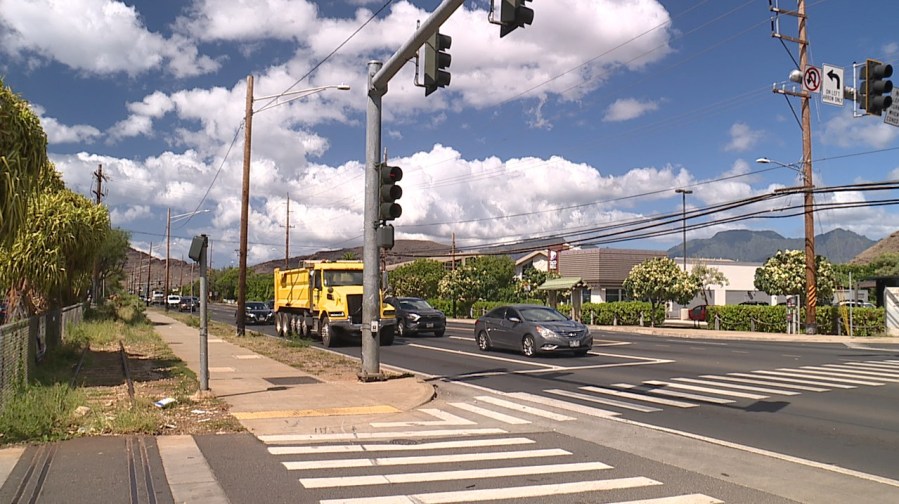HONOLULU (KHON2) — On Farrington Highway on Oct. 28, tragedy struck again. The victim — just nineteen, an aspiring pilot — was crossing in a marked crosswalk on her way to work.
“She followed the rules like we asked people to wait at the stoplight, press the button, wait to safely cross, and a marked crosswalk. She did everything right, and it still was not enough,” said State Representative Darius Kila, whose district includes Nanakuli.
Kila says the young woman was the oldest of four children — a daughter, sister and friend with a bright future ahead.
“This is ohana to me, and imagine trying to walk a mother through trying to figure out the next steps of, how do you move forward without your 19-year-old daughter,” said Kila, who spent the morning consoling the mother of the victim. “At what point is people going to realize enough is enough, and today it was them, and very much, tomorrow it could have been 10 children in the crosswalk, and anybody’s child. Her life was worth so much more than the accident that occurred today, but unfortunately, someone else’s actions put an end to her bright future.”
It’s a grief being felt across the state. As of this week, Hawai’i has recorded 110 traffic fatalities, already more than last year’s total.
“Every death, of course, is preventable, totally preventable, but only if drivers, pedestrians, policymakers, communities, everyone acts and acts now,” said Gordon Gillis, Safety Services Hawaii President & Lead Consultant.
Experts say the deadly pattern is clear: speeding, distraction, impairment and inadequate infrastructure — especially in rural areas with poor lighting and few sidewalks.
For lawmakers like Kila, frustration is growing — not just with drivers, but with a system he says fails to hold them accountable.
“We have every tool in the book that they asked us to pass, and we give it to them. We give it to law enforcement. They do their job, they step up enforcement, and then we lose in the judicial system. Because, for what reason, I don’t know,” said Kila. ‘I’m calling on the Governor, when he’s looking at a new chief justice, that someone is willing to enforce the law and the legislation that we have now.”
Gillis agrees, saying the solutions are known, but they require investment and commitment and a shift in mindset on safety.
“It’s a way of thinking. It’s an attitude. Now it’s, you know, I think of safe as S, Spot the hazard, assess the risk, find a safer way every day,” said Gillis. “So I think what we can do for transportation agencies, accelerate safety upgrades, if at all possible. For law enforcement, strengthen enforcement in our high-risk areas and our high-risk behaviors. For media organizations and schools, keep talking about this and expand safety education. You know, we have driver’s ed in school. We don’t have pedestrian education in school, and they are part of the equation. I think we could do more there. And everyone on the road needs to remember, we’re all in this together.”
The Department of Transportation is reviewing new traffic-safety measures, including more raised crosswalks and rapid flashing beacon lights. But until everyone on the road makes safety a priority, experts warn that tragedies like today’s will continue.
“My call to action is simply to commit today to slower speeds, better attention and safer crossings, because I believe that together, we can reverse this trend, but it’s going to take all of us,” said Gillis.
